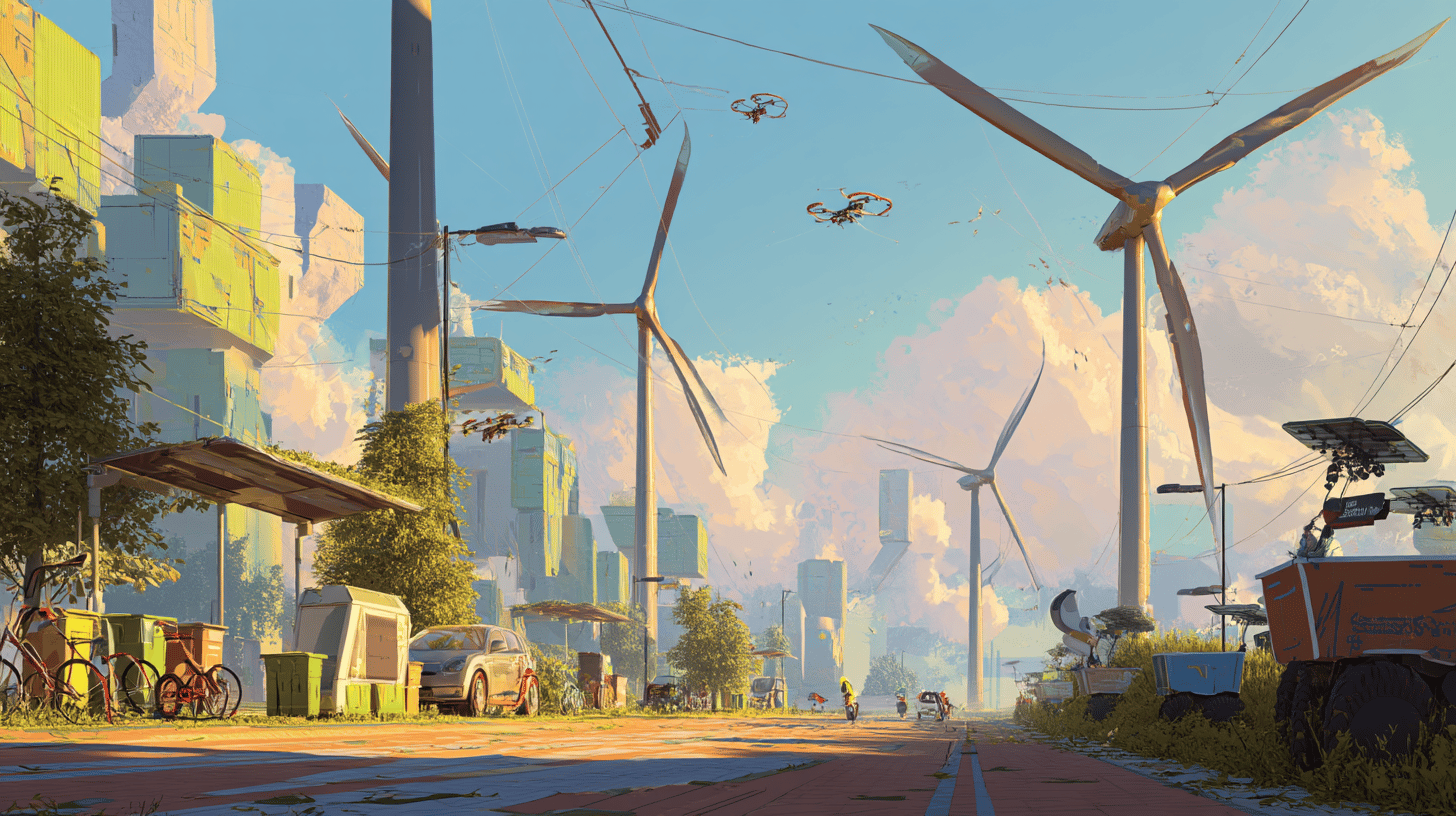In recent years, the relationship between technology and sustainability has become increasingly relevant as we face environmental challenges that require innovative and effective solutions. This post aims to explore how technological innovations are contributing to preserving the environment and building a sustainable future. If you care about the planet and preserving natural resources, read on to find out how technology can be an ally in conserving our world.
The Climate Emergency and the Role of Technology
At a time when climate change and environmental degradation threaten the quality of life on the planet, technology has emerged as an essential tool. Rising temperatures, melting glaciers and the increasing number of natural disasters signal that immediate action is needed. In this scenario, technological innovations are helping to mitigate these problems by providing solutions for a more rational and efficient use of resources.
Renewable Energy: The Sustainable Future
The transition to renewable energy sources is one of the most promising areas of technology in relation to sustainability. Solar and wind energy, for example, have grown significantly in recent years, offering effective solutions to reduce dependence on fossil fuels. With the development of more efficient solar panels and more powerful wind turbines, it is possible to generate energy in a cleaner and more affordable way for different regions.
As of 2022, the cost of solar energy has fallen by around 89% over the past two decades, making it a viable alternative for many countries. The use of batteries to store energy is also advancing, allowing communities to use electricity even on cloudy days or at times of low production.
Sustainable Mobility: The Advancement of Electric Vehicles
Mobility is also undergoing a significant transformation. Electric vehicles (EVs) are becoming increasingly popular, with automotive manufacturers investing heavily in technologies that improve efficiency and range. EVs not only reduce emissions, but they are also quieter, contributing to a more peaceful urban environment.
Additionally, fast-charging technology allows drivers to charge their electric cars in just a few minutes, just like they would with a traditional fossil fuel fill-up. Cities around the world are building charging infrastructure, encouraging more people to opt for these vehicles, which could lead to significant reductions in carbon emissions.
Precision Agriculture: Innovation in the Field
Agriculture is also benefiting greatly from technology, with the emergence of precision agriculture. This approach uses sensors, drones and data analytics to optimize the use of inputs such as water and fertilizers, reducing waste and increasing productivity.
Drones, for example, are used to monitor large areas of crops, allowing farmers to quickly identify areas that require irrigation or specific treatment. This reduces the environmental impact of agriculture while ensuring food security in an increasingly populous world.
Smart Recycling: Transforming Waste
Waste management is one of the main challenges faced by contemporary cities. Technology has proven effective in implementing smarter recycling systems, such as bins that connect to the internet and inform you when waste needs to be collected.
Additionally, the use of automated recycling machines, which can separate different types of plastic, metal and organic materials, makes it easier to recycle and reuse materials. This not only reduces the amount of waste that goes to landfills, but also promotes a circular economy, in which materials are constantly reused, saving natural resources.
Technology in Environmental Education
Technology also plays an essential role in environmental education. Digital platforms, apps and social networks have been vital in disseminating information about sustainable practices and mobilizing people around environmental causes.
Virtual initiatives such as online courses, webinars and workshops are enabling more people to learn about the importance of sustainability and how they can make a difference in their communities. In addition, awareness campaigns on social media have the power to reach a wide and diverse audience, promoting collective action in favor of preserving the environment.
The Power of Data for Sustainable Practices
Big data and predictive analytics are becoming more integrated into sustainable development, enabling more efficient management of natural resources. By collecting and analyzing large amounts of environmental data, it is possible to predict weather patterns, monitor ecological changes, and optimize the management of resources such as water and energy.
Businesses and governments are using data to implement more sustainable policies and strategies that promote environmental conservation. For example, data on water consumption can help identify areas that need conservation or adaptation in their water infrastructure.
Conclusion: Together for a Sustainable Future
The integration of technology into everyday practices is not just a trend, but a necessity in a world facing unprecedented environmental challenges. Renewable energy, sustainable mobility, precision agriculture, waste management and environmental education are just some of the areas where technology is showing its transformative potential.
We all have an important role to play in this transition to a more sustainable future. Whether it’s embracing innovations in our own lives or supporting initiatives that promote technology as an ally in the fight against climate change, collaboration and collective commitment are key. We invite you to join us on this journey and share your vision for how technology can contribute to a greener, healthier planet in the comments section below.



